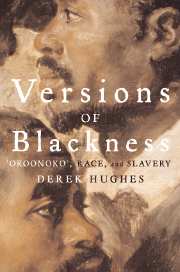Book contents
- Frontmatter
- Contents
- Introduction
- A Note on the Texts
- Chronology
- PART ONE THE MAJOR TEXTS
- PART TWO CONTEXTS: EUROPE, AMERICA, AND AFRICA
- A Short Account of the Destruction of the Indies
- Democrates Secundus
- “Of the Cannibals” and “Of Coaches”
- On Spreading the Gospel Among the Savages
- The English-American his Travail by Sea and Land
- A True and Exact History of the Island of Barbados
- The History of Sir Francis Drake
- Voyage de la France Equinoxiale en l'Isle de Cayenne
- An Exact Relation of the Most Execrable Attempts of John Allin
- The History of the Caribby-Islands
- Histoire Generale des Antilles Habitées par les François
- An Impartial Description of Surinam
- Great Newes from the Barbadoes
- The Negro's and Indians Advocate
- Friendly Advice to the Gentlemen Planters of the East and West Indies
- DISCUSSIONS OF COLONIALISM
- Bibliography
- Index
A True and Exact History of the Island of Barbados
Published online by Cambridge University Press: 05 June 2012
- Frontmatter
- Contents
- Introduction
- A Note on the Texts
- Chronology
- PART ONE THE MAJOR TEXTS
- PART TWO CONTEXTS: EUROPE, AMERICA, AND AFRICA
- A Short Account of the Destruction of the Indies
- Democrates Secundus
- “Of the Cannibals” and “Of Coaches”
- On Spreading the Gospel Among the Savages
- The English-American his Travail by Sea and Land
- A True and Exact History of the Island of Barbados
- The History of Sir Francis Drake
- Voyage de la France Equinoxiale en l'Isle de Cayenne
- An Exact Relation of the Most Execrable Attempts of John Allin
- The History of the Caribby-Islands
- Histoire Generale des Antilles Habitées par les François
- An Impartial Description of Surinam
- Great Newes from the Barbadoes
- The Negro's and Indians Advocate
- Friendly Advice to the Gentlemen Planters of the East and West Indies
- DISCUSSIONS OF COLONIALISM
- Bibliography
- Index
Summary
Richard ligon went to barbados in 1647, where he had bought a half-share in a sugar plantation. His business failed, and he wrote his book in a London debtor's prison in 1653. His viewpoint is that of a paternalistic slave owner who believes that his slaves are easily made happy (44). He does not question the institution of slavery and indeed provides detailed and to our eyes chilling financial breakdowns of the costs of clothing and feeding the various categories of workers: Slaves “shall be allowed yearly but three pair of Canvas drawers a piece, which at 2s a pair, is 6 s.”; their subordinate overseers, by contrast, are allowed six pairs. Servants are fed on beef and pork, slaves on turtles and fish. Although Ligon on the whole has a low opinion of the characters of black Africans, there is “no rule so general but hath his acception [sic]” (53), and he praises the honesty and decency of some slaves while believing that “the most of them are as near beast as may be, setting their souls aside”. He deplores the cruelty of some masters and is indignant that an intelligent, good-natured slave (Sambo) should have been denied baptism. Yet he approves of the measures with which his friend Colonel Walrond discouraged a suicide epidemic among slaves, who believed that by dying they would return to their countries of origin: Walrond disproved this theory by displaying the heads of the suicides on poles.
- Type
- Chapter
- Information
- Versions of BlacknessKey Texts on Slavery from the Seventeenth Century, pp. 300 - 306Publisher: Cambridge University PressPrint publication year: 2007



